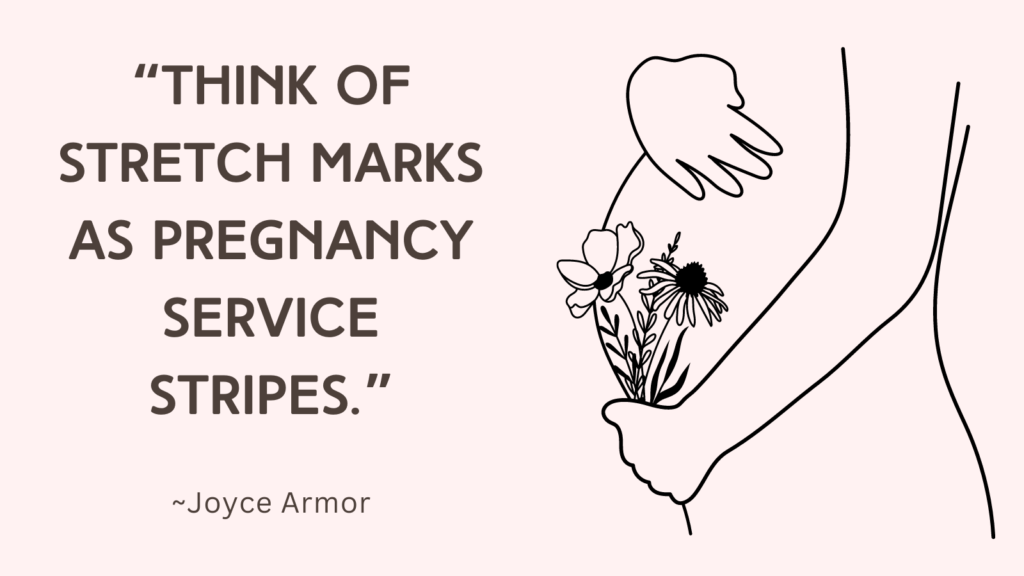This post contains some of the best techniques for gentle birth.
What Is Gentle Birth?
Gentle Birth is an approach to childbirth that emphasizes the importance of informed decision-making, a supportive birth environment, and minimal medical interventions.
Here are some key aspects of Gentle Birth:
1. Informed Decision-Making
Gentle Birth encourages individuals to become knowledgeable about their birthing options, including natural pain management techniques, relaxation exercises, and various positions for labor and delivery.
2. Supportive Birth Environment
Creating a calm and comforting atmosphere during labor can greatly enhance the birthing experience.
Gentle Birth encourages the use of dim lighting, soothing music, aromatherapy, and the presence of loved ones to promote relaxation and reduce anxiety.
3. Minimizing Interventions
While medical interventions can be necessary in certain situations, Gentle Birth promotes the idea of using interventions judiciously and only when medically indicated.
This means avoiding unnecessary medical interventions, such as artificial induction of labor or continuous fetal monitoring, unless there is a clear medical benefit.
4. Natural Pain Management
Gentle Birth encourages the use of natural pain management techniques, such as breathing exercises, visualization, massage, hydrotherapy, and movement.
These techniques can help individuals cope with the intensity of labor while promoting relaxation and a sense of control.
5. Emotional Support
Emotional support plays a crucial role in Gentle Birth. Birthing individuals are encouraged to have a birth partner or doula who can provide encouragement, reassurance, and physical support throughout the labor process.
Gentle Birth aims to shift the focus from a medicalized approach to childbirth towards a more holistic, woman-centered approach.
It recognizes that each birthing experience is unique and should be respected and supported accordingly.
Related: Best 70 Pregnancy Hacks (+Products Recommendation)
Preparing for Gentle Birth
1. Select a supportive healthcare provider or midwife
It is essential to choose someone who shares your vision and values when it comes to childbirth.
A supportive healthcare provider or midwife understands the importance of providing gentle care throughout your pregnancy and during labor.
They will be patient, attentive, and respectful of your wishes, ensuring that you feel empowered and in control during the birthing process.
For example, they might use techniques such as massage, relaxation exercises, or water therapy to create a calm and soothing environment.
By establishing a strong rapport with your healthcare provider or midwife, you can build trust and feel confident in their ability to guide you through a positive and gentle birth experience.
Related: Best 7 Pregnancy Self Care Products
2. Choose a suitable birthing location
When considering where to give birth, it’s essential to find a setting that aligns with your preferences, values, and comfort.
Many options are available, such as hospitals, birthing centers, or even home births, each with its own advantages and considerations.
Hospitals offer access to medical interventions and specialized care but may feel more clinical.
Birthing centers provide a more home-like atmosphere, with a focus on a natural and holistic approach to childbirth.
Home births allow you to create a familiar and relaxed environment, promoting a sense of comfort.
It’s crucial to research each option thoroughly, visiting potential locations, discussing your birth plan with healthcare providers, and assessing the level of support provided.
Considering factors such as the availability of midwives or doulas, birthing tubs, and pain relief options can help you make an informed decision.
Related: What To Do After Positive Pregnancy Test?
3. Create a birth plan that promotes gentle birth
Creating a birth plan that promotes gentle birth involves thoughtful consideration and communication with your healthcare provider.
Start by researching and understanding the different options available to you during childbirth, such as water births, natural pain management techniques, and minimal medical interventions.
Discuss these preferences with your provider, ensuring their support and willingness to accommodate your wishes.
Including specific requests in your birth plan, such as low lights, calm music, or essential oils, can help create a soothing environment.
Additionally, consider including a support person or a doula who can advocate for and provide continuous emotional and physical support throughout labor.
Related: What To Wear To First Prenatal Appointment (& What To Avoid)
4. Attend childbirth education classes focused on gentle birth techniques
One effective way to prepare is by attending childbirth education classes that focus on gentle birth techniques.
These classes provide expectant parents with valuable information and tools to navigate the birthing process with confidence and knowledge.
They offer a wide range of topics, such as breathing techniques, relaxation exercises, pain management options, labor positions, and emotional support strategies.
By participating in these classes, parents can gain a deeper understanding of the physiological and emotional aspects of childbirth, which can help them make informed decisions about their birth preferences.
Additionally, these classes often encourage open discussions among participants, allowing parents to share their fears, concerns, and questions in a supportive environment.
Attending childbirth education classes focused on gentle birth techniques not only equips expectant parents with practical skills but also builds their confidence and fosters a sense of empowerment as they approach this transformative journey.
Related: Best Pregnancy Resources (Information, Apps, Books, Podcasts)
Best Techniques for Gentle Birth
Mind-body practices
#1. Breathing exercises
One of the best techniques to achieve gentle birth is through breathing exercises. These exercises promote relaxation, reduce anxiety, and help the mother stay focused during labor.
One example of a breathing exercise that can be practiced during labor as part of a Gentle Birth approach is called “Cleansing Breath.” Here’s how it can be done:
1. Find a comfortable position: Sit or lie down in a position that allows you to relax your body and focus on your breath. This could be sitting on a birthing ball, leaning against a stack of pillows, or lying on your side.
2. Close your eyes and take a few deep breaths: Inhale deeply through your nose, filling your lungs with air, and then exhale slowly through your mouth, releasing any tension or stress with each breath.
3. Begin the Cleansing Breath: Take a slow, deep breath in through your nose, allowing your belly to expand fully. Imagine you are inhaling pure, positive energy. Count to four as you inhale.
4. Hold the breath momentarily: At the top of your inhalation, gently hold the breath for a brief moment, counting to two.
5. Exhale fully: Release the breath slowly and smoothly through your mouth, counting to six. Imagine you are exhaling any discomfort or tension in your body.
6. Repeat the cycle: Continue this pattern of inhaling for a count of four, holding for a count of two, and exhaling for a count of six. Repeat this cycle several times, allowing the rhythm of your breath to calm and relax you.
Remember to breathe at a comfortable pace that feels natural for you.
Related: How To Use A Pregnancy Pillow?
#2. Visualization
Visualization involves creating and focusing on mental images that promote relaxation and ease during labor.
By visualizing the birth process as smooth and gentle, mothers are able to cultivate feelings of serenity and confidence.
Here’s a visualization exercise that can help promote a gentle birth experience:
1. Find a comfortable and peaceful space: Sit or lie down in a quiet place where you won’t be disturbed. Close your eyes and take a few deep breaths to relax your body and mind.
2. Create a calming visualization: Begin by imagining yourself in a serene and peaceful environment. It could be a beautiful garden, a tranquil beach, or a peaceful mountain setting. Picture every detail vividly, using all your senses.
3. Connect with your body: Shift your focus to your body and the sensations within it. Visualize your baby nestled securely in your womb, feeling their presence and their connection to you. Imagine a warm, golden light surrounding both you and your baby, creating a sense of safety and love.
4. Embrace relaxation: Visualize each muscle in your body relaxing, starting from the top of your head down to your toes. Picture tension leaving your body with each breath, allowing yourself to sink deeper into a state of calmness and relaxation.
5. Affirmations for a gentle birth: Repeat positive affirmations to yourself, such as “I trust my body and its ability to birth my baby gently,” or “I am surrounded by love and support during this birth experience.” Feel these affirmations resonate within you and believe in their truth.
6. Progress through your birth journey: Visualize the progressing stages of labor. See yourself breathing calmly through contractions, feeling confident and empowered. Imagine your body working harmoniously, with each wave of sensation bringing your baby closer to your arms.
7. Meet your baby: As you near the end of your birth visualization, imagine the moment your baby is born. Picture the joy and excitement as you bring your baby to your chest, feeling an overwhelming rush of love and connection.
8. Gratitude and closing: Take a moment to express gratitude for this visualization exercise and the opportunity to experience a gentle birth. Slowly bring your awareness back to the present moment, wiggling your fingers and toes, and gently opening your eyes.
Remember, this visualization exercise is meant to help you relax and prepare for a gentle birth. Feel free to modify it in any way that resonates with you personally.
Related: Best +25 Pregnancy Journal Prompts
#3. Positive affirmations
Affirmations are positive statements that help shift the mindset and create a sense of confidence and relaxation during labor and delivery.
By repeating these affirmations, women can cultivate a positive mindset and embrace the strength within themselves.
For instance, a popular affirmation is “My body knows how to birth my baby.” This affirmation reminds women of the amazing capabilities of their bodies and empowers them to trust the natural birthing process.
Another example is “I am strong, capable, and fully supported.” This affirmation encourages women to tap into their inner strength and reminds them that they have a solid support system in place, whether it be their partner, doula, or healthcare provider.
It’s essential to choose affirmations that resonate deeply and spark a sense of positivity and belief. Some women may find comfort in affirmations that focus on relaxation, such as “I am relaxed and at peace” or “Each contraction brings me closer to meeting my baby.”
Writing the chosen affirmations on cards or sticky notes and placing them in visible locations can serve as reminders throughout the birthing process.
Reciting the affirmations during contractions or creating a soothing playlist that incorporates them can also be helpful.
Partner involvement is crucial, as they can gently whisper the affirmations to offer additional support and encouragement.
Related: Best +30 Birth Affirmations
Physical comfort measures
#4. Positioning and movement during labor
Upright positions, such as standing, walking, or squatting utilize gravity to encourage the downward descent of the baby and help open up the pelvis for an efficient birth.
Using birthing balls or peanut balls, which allow women to sit, rock, or bounce, can also offer both physical support and freedom of movement during contractions.
#5. Hydrotherapy options for pain relief
Hydrotherapy involves using water as a means to alleviate the discomfort of labor pains.
There are various options available for hydrotherapy during childbirth, including birthing pools, showers, and warm baths.
The water can help relax the body, providing a sense of weightlessness while reducing the intensity and frequency of contractions. It can also promote relaxation of the pelvic muscles, which in turn enhances blood circulation and allows for greater oxygen flow to the uterus.
This gentle method of pain relief can be particularly effective during the early stages of labor, offering women a soothing and calming environment where they can focus on their breathing and find comfort.
However, it is important for expectant mothers to consult with their healthcare provider before incorporating hydrotherapy into their birth plan, as individual circumstances and medical considerations may vary.
Related: Giving Birth Without A Support Person: Top 7 Ways To Cope
#6. Massage and touch therapies
Massage during labor can provide physical and emotional support, helping to relieve discomfort and reduce stress levels.
Light touch therapies, such as gentle stroking, can also contribute to relaxation by releasing oxytocin, known as the “love hormone,” which promotes feelings of well-being and helps facilitate effective contractions.
A popular massage technique during labor is the sacral counterpressure, which involves applying firm pressure to the sacrum area, easing back pain and providing relief during contractions.
Another effective technique is the use of warm compresses on the lower back or abdomen, which can help relax tense muscles and provide soothing comfort.
Massage and touch therapies can be tailored to individual preferences and needs. Some women may find light touch or slow, rhythmic movements most effective, while others may prefer deeper pressure or specific acupressure points.
It is essential for birth partners or support persons to communicate and listen to the mother’s feedback to ensure her comfort and satisfaction.
In addition to physical benefits, massage and touch therapies also promote emotional bonding between the mother and her birth partner.
By actively engaging in these techniques, the partner can offer reassurance and love, creating a harmonious and serene birthing environment.
It is important to consult with a trained prenatal massage therapist or a healthcare provider who specializes in massage during pregnancy to ensure safe and appropriate techniques.
With proper guidance and practice, massage and touch therapies can be valuable tools for creating a gentle and positive birth experience, promoting relaxation, pain relief, and a deep connection between the mother, her partner, and their baby.
Related: How To Find A Midwife? Top 11 Steps
Emotional Support
#7. Maintain a calm and encouraging environment
One crucial strategy is promoting relaxation and reducing stress by creating a soothing ambiance.
1. Create a peaceful setting: Dim the lights, play soft music, and decorate the room with calming elements like candles.
2. Surround yourself with supportive individuals: Choose a birth team that respects your wishes and is knowledgeable about gentle birthing techniques.
3. Play comforting sounds: Consider playing nature sounds, relaxing music, or recorded affirmations during labor to provide a calming audio backdrop.
4. Maintain privacy: Ensure that you have a space where you feel safe and protected, away from any unnecessary distractions or intrusions.
5. Avoid time pressure: Create an environment where there is no rush or urgency, allowing labor to progress naturally without feeling rushed.
Related: Best 21 Midwife Gifts Ideas
#8. Reflect on positive birth stories
By immersing yourself in these empowering narratives, you can cultivate a mindset of confidence and trust in your body’s ability to give birth naturally.
Hearing stories of calm and gentle birthing experiences can help alleviate anxiety, decrease fear, and instill a sense of empowerment.
For instance, reading about women who have successfully implemented relaxation techniques, such as deep breathing exercises or visualization, during labor can inspire soon-to-be mothers to incorporate these practices into their own birth plan.
Additionally, learning about different positions that aid in a smooth and gentle childbirth journey, such as kneeling or squatting, can provide valuable insights for women seeking alternative birthing options.
Reflecting on positive birth stories can foster a belief that childbirth is a natural process and that a gentle birth experience is attainable with the right mindset, preparation, and support.
Related: Minimalist Hospital Bag Checklist (+Hospital Bag Checklist PDF)
Contribution Of Doula Services To Gentle Birth
Doulas are trained professionals who offer physical, emotional, and informational support to pregnant women and their partners throughout the childbirth process.
Their presence can greatly enhance the birthing experience by providing continuous support, advocating for the mother’s preferences, and helping to create a soothing environment.
One of the key techniques used by doulas is effective communication. They work closely with expecting parents to understand their desires, fears, and expectations surrounding childbirth.
By building a strong rapport, doulas can provide personalized guidance and support tailored to each individual’s needs. Whether it’s helping the mother navigate her birth plan, explaining medical procedures, or offering reassurance during labor, doulas keep the lines of communication open and foster a sense of trust.
Another important technique employed by doulas is providing physical comfort measures during labor. This can include massage, positioning suggestions, and techniques to manage pain naturally, such as breathing exercises or visualization techniques.
By using these tools, doulas help mothers feel more relaxed and in control, easing any anxieties and allowing the birth process to unfold gently.
Doulas also act as advocates for the mother’s birth preferences within the healthcare system. They work alongside the medical team to ensure that the mother’s voice is heard and that decisions are made collaboratively.
Related: How To Find A Doula? 21 Tips To Find The Best Doula For You
Overcoming Barriers to Gentle Birth
1. Addressing common fears and misconceptions
Many women have heard horror stories or seen dramatic portrayals of labor, leading them to believe that birth is a painful and traumatic event.
However, it’s important to remember that our bodies are designed to give birth and that pain during labor is a natural sensation.
Re-framing this fear and understanding that the pain is temporary and purposeful can help women approach birth with confidence and trust in their own bodies.
Another misconception that often arises is the belief that interventions and medical procedures are necessary for a safe birth.
While medical interventions can be life-saving in certain circumstances, they are not always required for a healthy birth. In fact, unnecessary interventions can sometimes lead to complications and interfere with the natural process of labor.
It’s important for women and their families to educate themselves about the benefits and risks of different interventions, and to communicate openly with their healthcare provider to make informed decisions that align with their birth preferences.
Prenatal classes and birthing preparation courses can provide evidence-based information and techniques to help women build confidence in their ability to birth gently.
Related: Top 17 Questions To Ask A Doula
2. Navigating medical interventions
While it is ideal for childbirth to progress naturally and without unnecessary interventions, there are instances when medical interventions are necessary to ensure the health and safety of both the mother and the baby.
It is crucial to understand that medical interventions should be used judiciously and in collaboration with the mother’s preferences and informed consent.
Many women may feel anxious or scared about the prospect of medical interventions during childbirth, viewing them as intrusive or unnatural. However, it is important to recognize that medical interventions can sometimes be life-saving and beneficial in certain circumstances.
For example, an emergency cesarean section may be necessary if the baby is experiencing distress or if there are complications that put the mother’s health at risk.
Attending childbirth education classes and seeking out evidence-based research on medical interventions can also help individuals make informed decisions and become familiar with the potential outcomes associated with different interventions.
Related: Are Doulas Worth It?
Conclusion
Gentle birth refers to a birthing experience that prioritizes the physical and emotional well-being of both the mother and baby.
It embraces the idea that birth is a natural process and aims to reduce medical interventions while creating a calm and supportive environment.
During a gentle birth, the focus is on empowering the mother and allowing her body to guide the labor process.
Techniques such as breathing exercises, relaxation techniques, hydrotherapy, and massage may be used to help manage pain and create a soothing atmosphere.
In a gentle birth, the mother is encouraged to move freely and find positions that are comfortable for her, such as walking, squatting, or being in water.
The presence of a supportive birth team, including partners, doulas, or midwives, plays a crucial role in providing emotional support and ensuring the mother’s desires and preferences are respected.
This approach emphasizes the importance of informed decision-making and promotes a positive and empowering birth experience.
Ultimately, the goal of gentle birth is to create a nurturing and safe space for both the mother and baby, promoting their well-being and fostering a positive start to their journey together.




